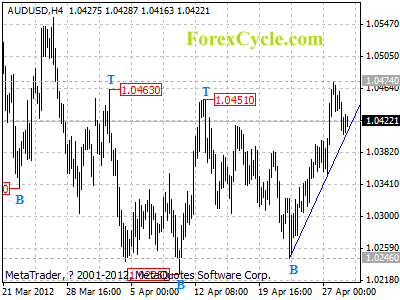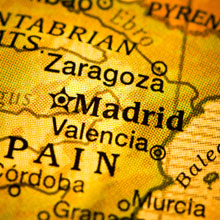Would you risk a lethal electric shock – so you could make a few hundred bucks?
It sounds like some sadistic Japanese game show. But thieves worldwide are doing exactly this.
You’d have to have rocks in your head, but ‘copper thieves’ are stealing copper wiring from electrical substations, transmission lines, and anywhere copper wiring is visible and unsecured.
There are plenty out there willing to risk certain death for some copper wire. This is very common now. But it doesn’t always go to plan. Just last week, a man in East Kelowna, Canada, took 50,000 volts instead of a carload of copper. Click here for the news report.
The problem is so big, enterprising folk are building businesses to help prevent copper theft. How you protect millions of kilometres of electrical infrastructure is beyond me.
The theory goes that the price of copper is so high that copper thieves can make a good wicket stealing it.
But this doesn’t add up. Let’s look at the numbers.
Copper has tripled in price over 3 years, but is still $8,546 / tonne. This means it is just $8.55 a kilo. Not that you’d get anything like that for second-hand copper – let’s say they’ll get $5 a kilo.
So if a couple of blokes wanted to rustle up $1000, they will have to cut down 200 kilos of copper cable…risking death by electrocution…and then have to load the stuff on to a truck…and then sell it.
It sounds like a lot of work. But we guess some people are desperate. Fortunately, there’s a much easier, legal and less dangerous way to make a buck from copper. I’ll explain how in a moment…
Copper Price Rebounds
After the copper price fell 6% in two months, it just turned up again sharply, gaining 5.1% in the last week.

What’s behind this?
The copper price got a dose of nitrous last week when the head of the US Federal Reserve, Ben Bernanke, gave his strongest hint yet that the next round of money printing (QE3) was on its way. He said:
‘We believe that the current monetary policy is appropriate, but that does not mean we will not take further measures’.
To seal the deal, the American economic growth figure for the first 3 months of 2012 came out on Friday night, and it was a shocker. Growth was the annual equivalent of just 2.2%, down from 2.8% for the 3 months before that.
This big drop will have Bernanke’s itchy trigger-finger heading for the digital version of the printing presses. Even just the prospect of this has already seen the value of the US dollar index fall 1.1% in a week. As commodities are priced in US dollars, commodity prices are rising.
Previous doses of Doctor Bernanke’s ‘monetary medicine’ have been bonanza times for speculators. Metal prices in particular have soared as punters played the metals markets.
Copper is a favourite market for punters because of its size. With annual copper production around 18 million tonnes a year, the copper market is worth about $170 billion annually. So it’s big and liquid. Enough for even the biggest hedge funds to have a crack.
So with Bernanke hinting that the game is back on, punters are already buying copper now.
Adding to this demand for copper is some genuine tightness in the market.
By this I mean that in the last few years, copper miners have struggled to keep up with the increase in demand, particularly the demand coming out of China.
Part of the problem is some of the world’s biggest copper mines are also some of the oldest. This means their glory years are fading, and maintaining production is getting harder.
Take Codelco (unlisted) for example. It is the world’s biggest copper miner, and supplies about 10% of the world’s copper.
It may be the biggest producer, but it recently had to buy copper from traders and other producers – just so it could meet its obligations to buyers.
When the giants are struggling, this is a clear warning bell that we are not likely to see any slack in the copper market any time soon. And where there are shortages – there are price rises.
China Set to Buy Copper Again?
One way of seeing the amount of slack in a metal market is to look at the amount of ‘inventory’, or metal stored in warehouses reported by the metals exchanges.
Sure enough, the copper inventory on the London Metals Exchange (LME) fell by 4.1% last week. But that’s just the latest in many weekly drops. Overall, copper inventories in London have in fact halved since last September.
This is in part due to the shortage of copper.
But it’s also down to China buying up all the copper they can get their hands on.
Chinese copper inventories have grown. You never really know exactly what they are sitting on, but commodity analysts, CRU, estimate they now have about 58% of the world’s inventory. This would translate to 3 million tonnes of copper.
Some fear that that China will use this huge stash to push the price down. But I doubt that. Copper is too important to their economy. It’s used at every level of industry and construction: in wiring of new buildings, wiring of public infrastructure like new train lines and roads, plumbing in home construction, manufacturing of electronics, white goods, electric vehicles, and the list goes on.
Everything China wants to achieve will depend on copper. Building a big stash is part of a long-term strategy. They can see the coming shortage and are making provisions. And think about it – who else do you know has a five-year plan?
And sure enough, despite quietly buying 58% of the world’s copper metal, the Chinese copper inventory has now begun to fall. Shanghai copper inventory fell by 3% last week.
It will be worth keeping an eye on copper in coming weeks as Chinese inventory levels are a good set up for further price rises.
This Copper Stock Had a 33% Gain in Four Months
It will also be good news for investors in copper stocks. I tipped a copper junior to Diggers and Drillers readers 20 months ago, and this is up 141% now. The beauty of investing in good small-cap copper stocks is they amplify the move in the copper price. Even just since the start of this year, copper has increased 11%, while the stock I tipped has gained 33%.
There’s more good news. All small-cap mining stocks tend to follow the copper price to a degree.
The Emerging Companies index (XEC) is mostly made of Aussie small-cap mining stocks, and it tends to follow the copper price around. This is because copper is used at all levels of industry, so it tends to predict the direction of global economic growth. And small-cap mining stocks track economic growth.

What’s interesting here is that copper has started moving up already, but the small-cap miners are yet to respond. You can see we had a similar situation in mid-December when copper got a head-start, and the small-cap miners took a few weeks to get the message.
If we see a repeat of this, then we may be on the cusp of the next leg up in the high-risk, but high-return, small-cap mining stock space. These are the kind of stocks I tip for Diggers and Drillers readers, so I’ll be keeping a close eye on this.
Dr. Alex Cowie
Editor, Diggers & Drillers
Related Articles
The Conference of the Year “After America” DVD






